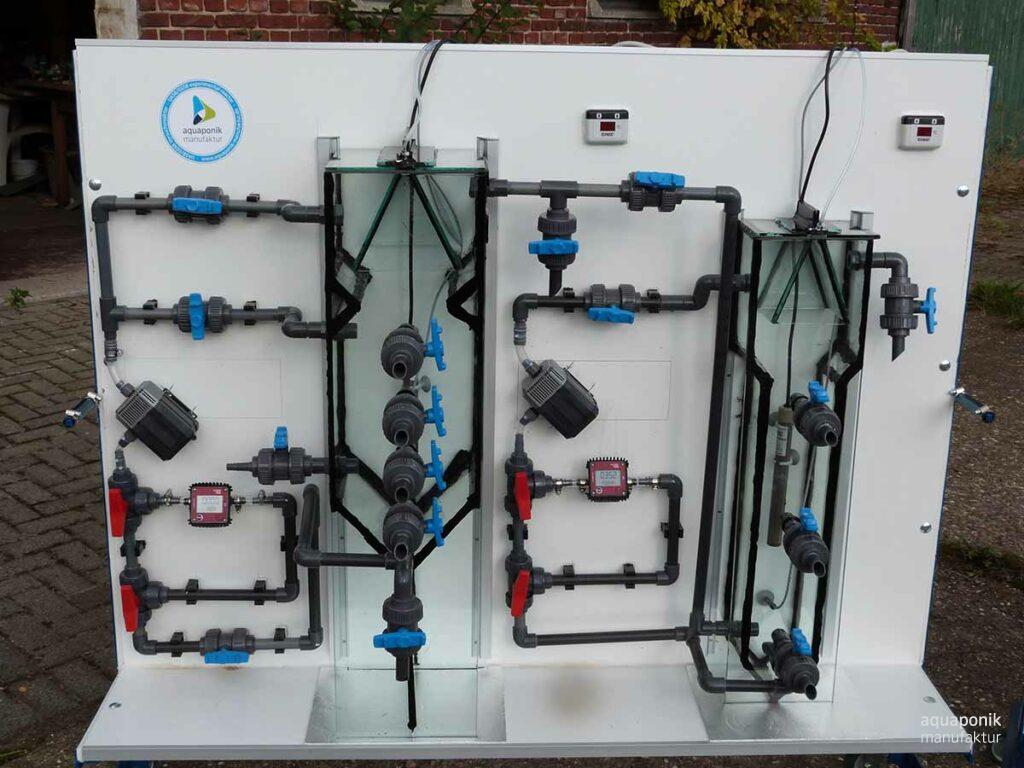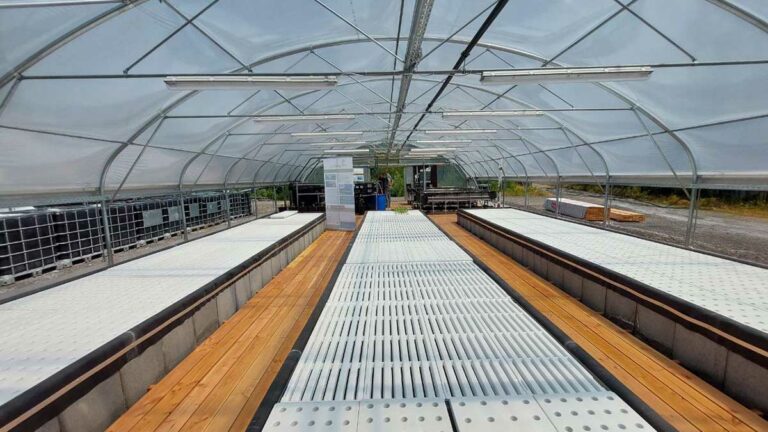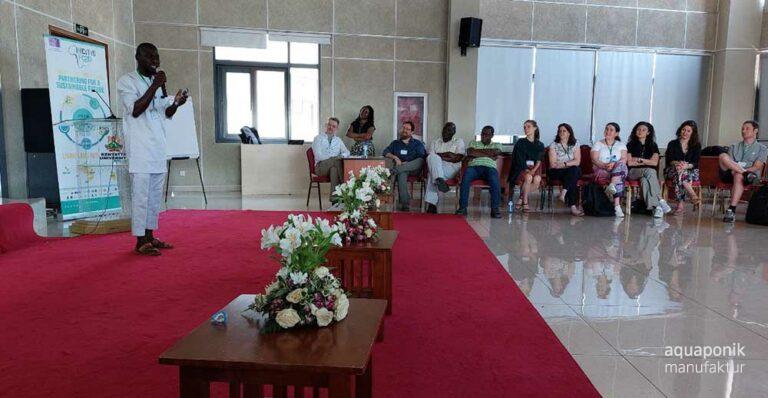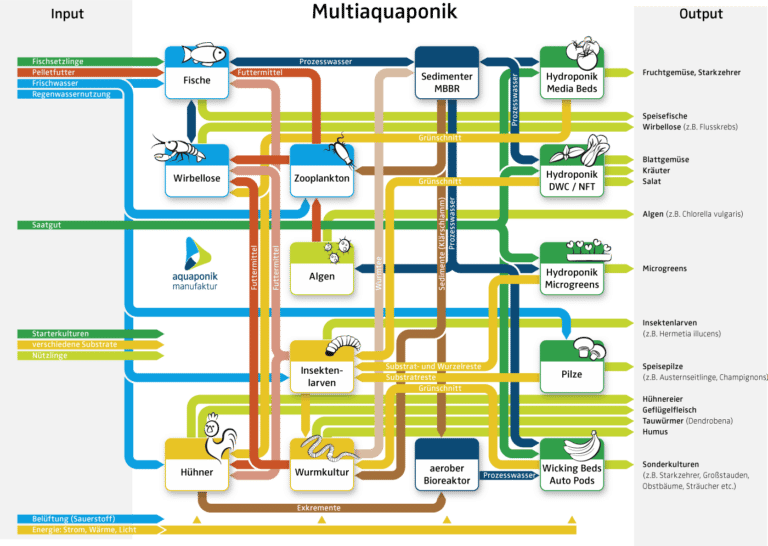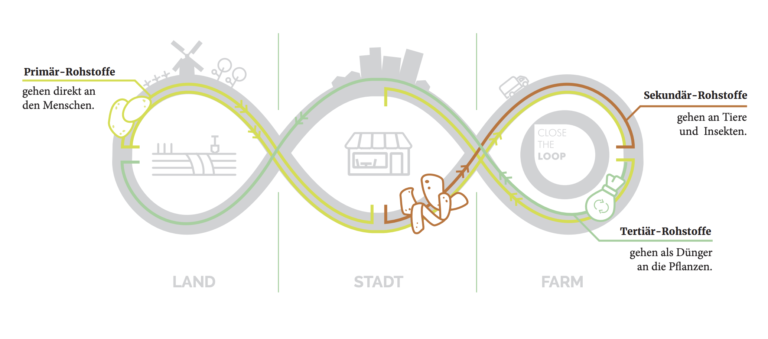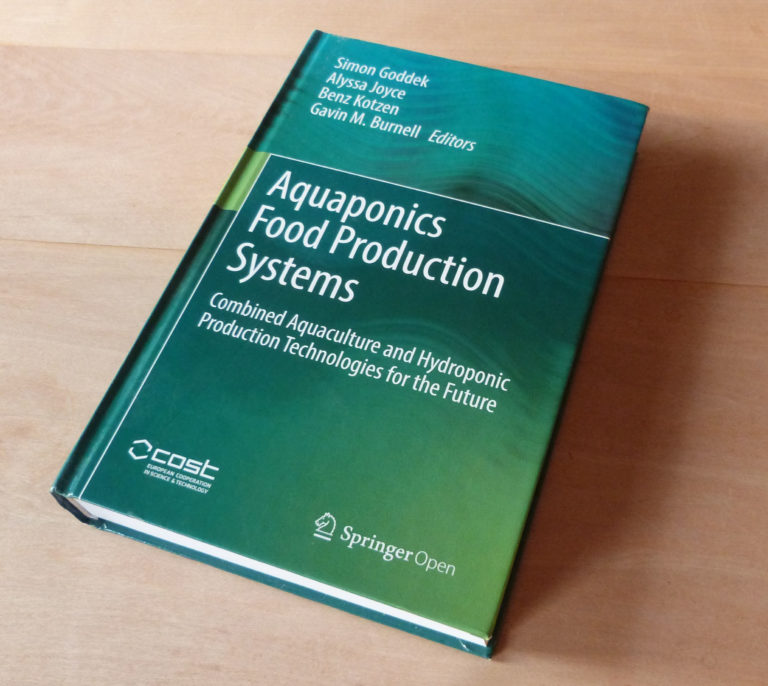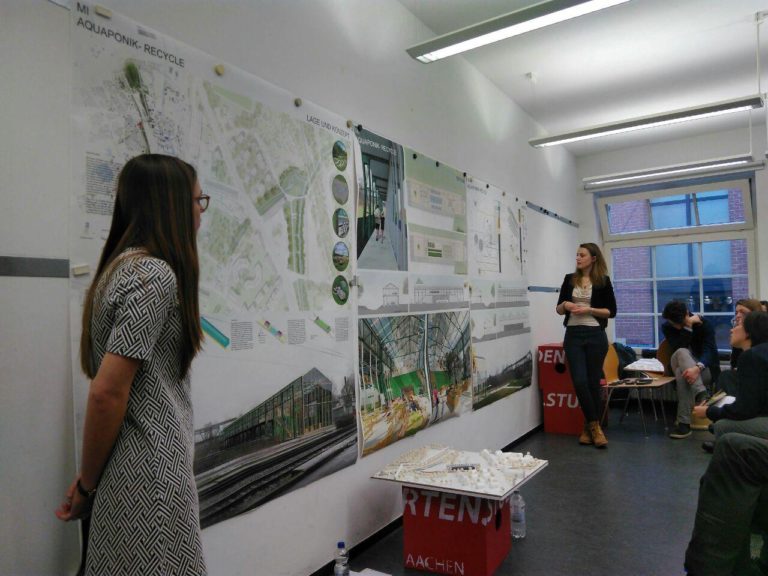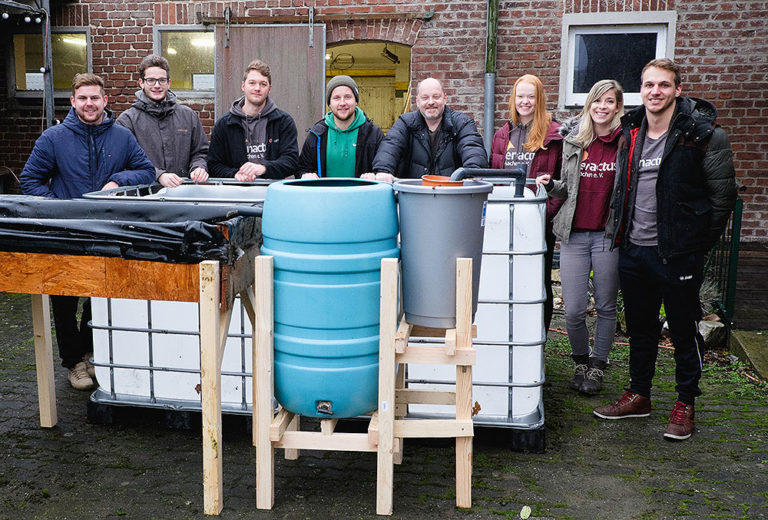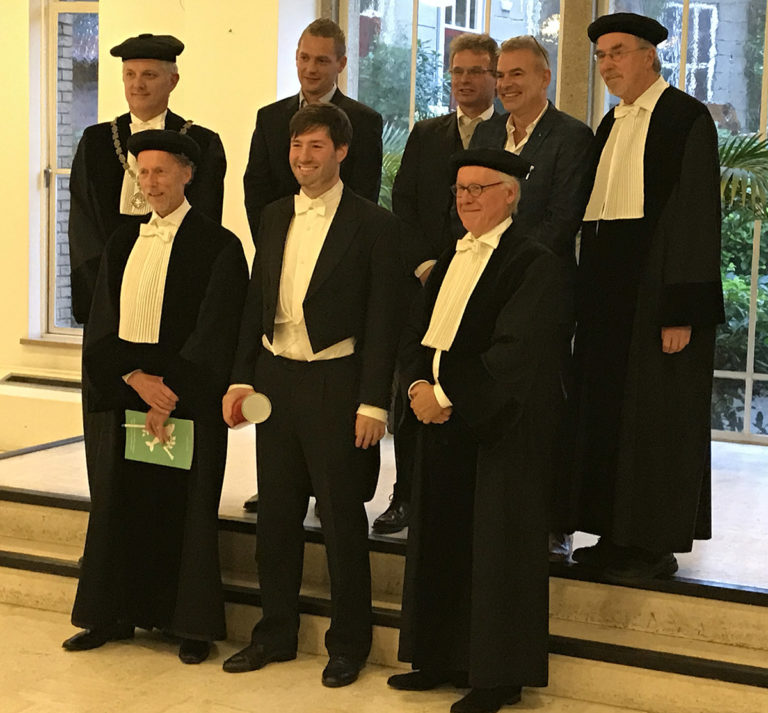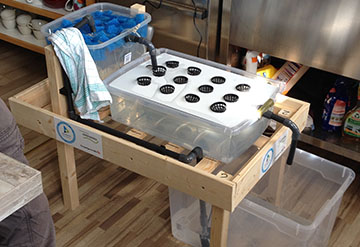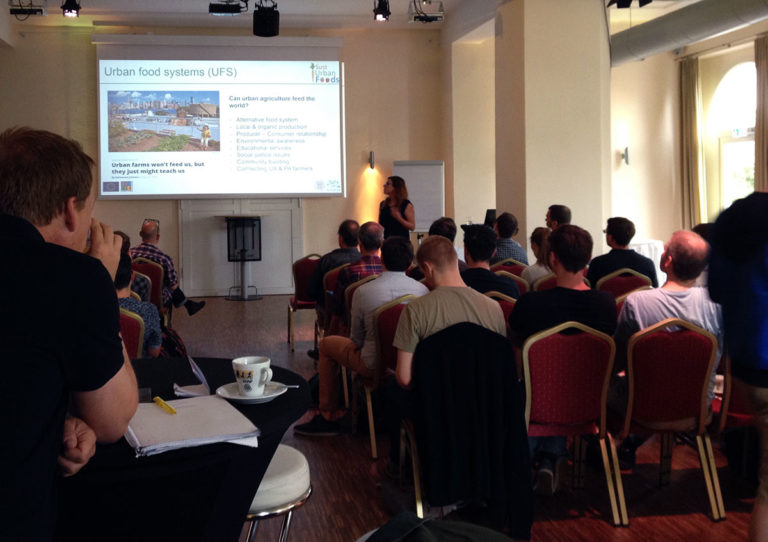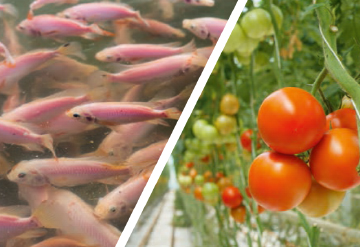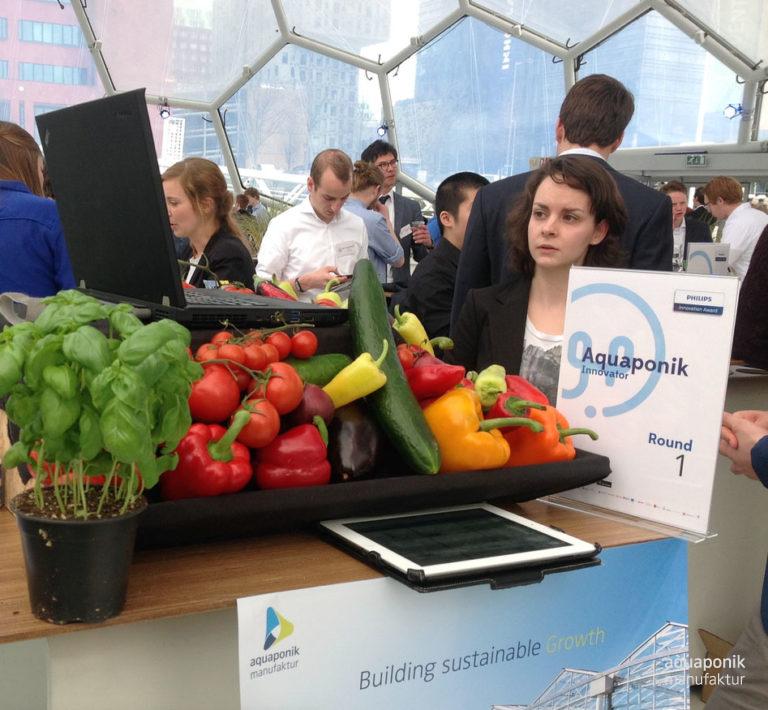As part of our work for aquaponics research, we built mobile UASB / EGSB bio-reactor sets. They were used in scientific experiments at 4 different universities.
The remineralization of the water can hardly be ensured with exclusively aerobic water treatment. Therefore, it makes sense to run a further anaerobic stage for the mineralization of the water parallel to the aerobic treatment. This is where so-called UASB / EGSB reactors come into play, which were previously only used in sewage technology. They meet completely different requirements there. The purpose in aquaponics is to additionally mineralize the water in the process. Initial research results show that anaerobic treatment of the water delivers first-class results in terms of the treatment of nutrients. Not far-fetched, because after all, the influence of anaerobic processes in nature is also part of it, which specifically takes place in the sludge layer in the soil below the water.
After our participation in aquaponics research initially only related to the financing of scientific work or employees, we had the opportunity to prove our practical skills. Small UASB / EGSB bioreactors were required for series of experiments, which are not available on the market in this form. The first step was to use the abstract flowcharts and calculations to evaluate the various options for implementation.
From the schematic representation to the realization
When implementing the plans, many hardware-specific properties, such as Distances, freedom of movement, available components, pipe diameter are taken into account.
In advance, it was determined which material should be used. In the end, the classic construction made of glass had far more advantages than e.g. Have acrylic glass. The reactor set was made of glass using a classic aquarium design. This is the most robust and by far the most durable solution. Before determining the different component sizes, pipe lengths, etc., another drawing of the mounting plate with the components and the piping was created. Then the final positions could be determined.
Since some of the experiments are still ongoing and then an extensive evaluation will follow, the corresponding publication on the experiments is still in progress. As soon as it is available, we will include the link to the publication here.
